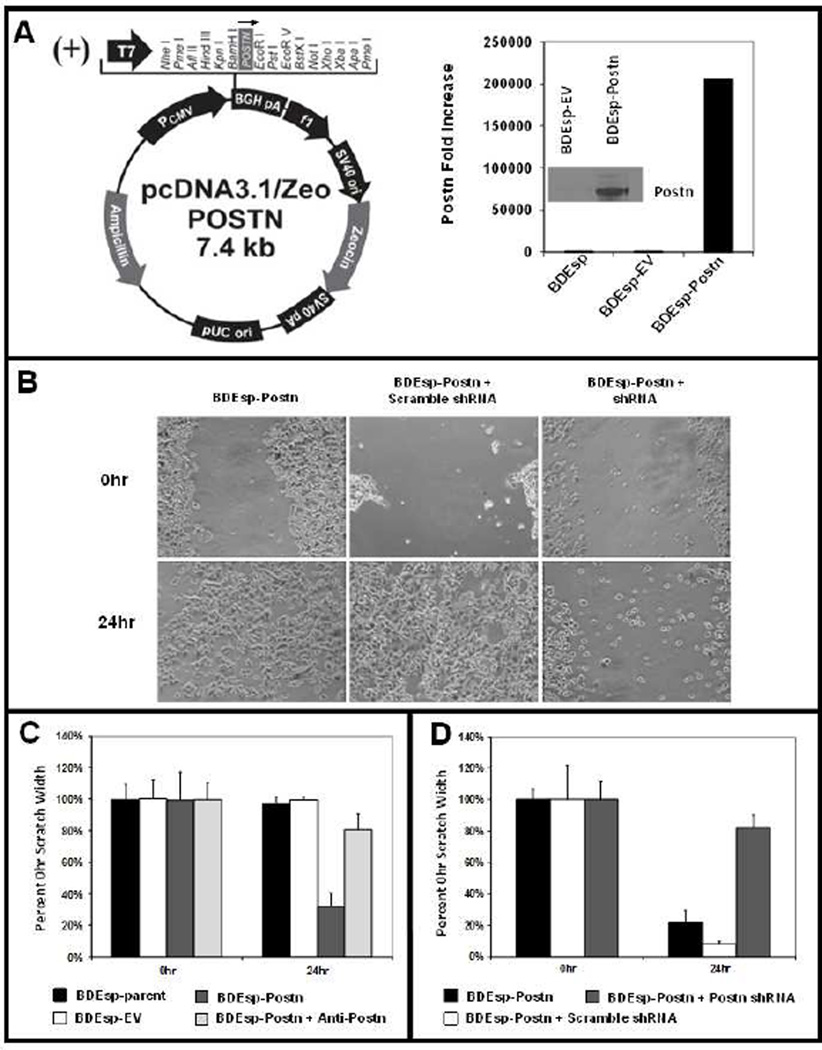Figure 3.
[A] Plasmid-based stable transfection of spontaneously-transformed, tumorigenic rat BDEsp cholangiocytes to constitutively overexpress normal rat periostin cDNA (2400bp). Real-time RT-PCR and Western blotting were used to validate resulting BDEsp-Postn clonal cell line (selected for zeocin resistance) for overexpression of normal rat Postn mRNA (graph) and secreted protein (insert) in culture medium. [B] Photomicrographs showing wound closure responses over a 24 hour period exhibited by BDEsp-Postn cells, BDEsp-Postn cells transfected with scrambled shRNA, and BDEsp-Postn cells transfected with rat Postn shRNA, respectively, in the scratch motility assay. [C] Scratch motility assay quantitative data demonstrating dramatically increased scratch wound closure, a reflection of cell migration, by cultured BDEsp-Postn cells compared with parent BDEsp and BDEsp- empty vector (EV) control cells. Treatment with anti-Postn antibody (ab14041 at 5.0 µg /ml) blocks the enhanced wound closure response of the BDEsp-Postn cells. [D] Similarly, as exemplified in [B], BDEsp-Postn cells and BDEsp-Postn cells transfected with scrambled shRNA, each exhibited prominent scratch wound closure responses at 24hr after the initial scrape, but this cell migration response is almost completely blocked in BDEsp-Postn cells transfected with rat periostin shRNA.

